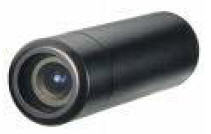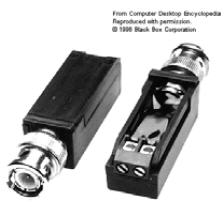Covert = A covert application refers to a situation where you don’t want the person to know that they are being watched or recorded. Also known as ‘hidden’ cameras or “nanny cams.” Covert cameras are typically legal in a residential setting. Individual states have various laws concerning the videotaping of employees or business patrons. In many states, it is necessary to post signage notifying employees and/or business patrons that they are under video surveillance.…
IPCS Terminology
IPCS Word of the Day: Compression
Compression = Compacting signal or data to lower bandwidth utilization. Video JPEG frames can take up a ton of bandwidth on a network, so typically a compression mechanism is used to “shrink” the frames down to an acceptable file size which is more easily transported without hogging bandwidth.…
IPCS Word of the Day: CMOS
CMOS= The usage of Complementary Metal-Oxide Semiconductors in imagers to sense images improves over CCD technology in resolution, dynamic range, and noise sensitivity.…
IPCS Word of the Day: CIF
CIF = Common Intermediate Format. The default frame resolution of 352×288 for DVR systems is known as the CIF.…
IPCS Word of the Day: CCTV
CCTV = Closed Circuit Television. The use of video cameras to transmit signals to a specific, limited set of monitors. It differs from broadcast television in that the signal is not openly transmitted, though it may employ point-to-point wireless links. CCTV is often used for surveillance in areas that need monitoring such as banks, casinos, airports, military installations and convenience stores. In industrial plants, CCTV equipment may be used to observe parts of a process that are remote from a control room, or where the environment is not comfortable for humans. CCTV systems may operate continuously or only as required to monitor a particular event.
…
IPCS Word of the Day: CCD
CCD = stands for “charge-coupled device.” First invented in the 1970s, this technology uses a shift register combined with photo-diodes to create the modern day imaging device. Used in cameras, scanners, fax machines, etc. The size of the CCD chip is normally 1/4″, 1/3″ or 1/2″. As a rule of thumb, the larger the size, the higher the quality of the image produced and the higher the price. Refer to specification sheet of the camera for its CCD chip size.…
IPCS Word(s) of the Day: Bullet Camera
Bullet Camera = A type of camera with a bullet-like shape. This type of camera typically has a small form factor which makes it less noticeable and therefore semi-“covert.”
 …
…
IPCS Word of the Day: BNC
BNC= Coaxial cabling. If you have cable television or cable Internet service at home, it is delivered over a BNC Coaxial cable.
 …
…
IPCS Word of the Day: Balun
Balun= An acronym for BALanced/UNbalanced. A device commonly used to change one cabling media to another (ex. coaxial to twisted pair balun)
 …
…
IPCS Word(s) of the Day: Auto Iris
Auto Iris = Aperture automatically opens or closes to maintain proper light levels on the faceplate of the camera pickup device.…
